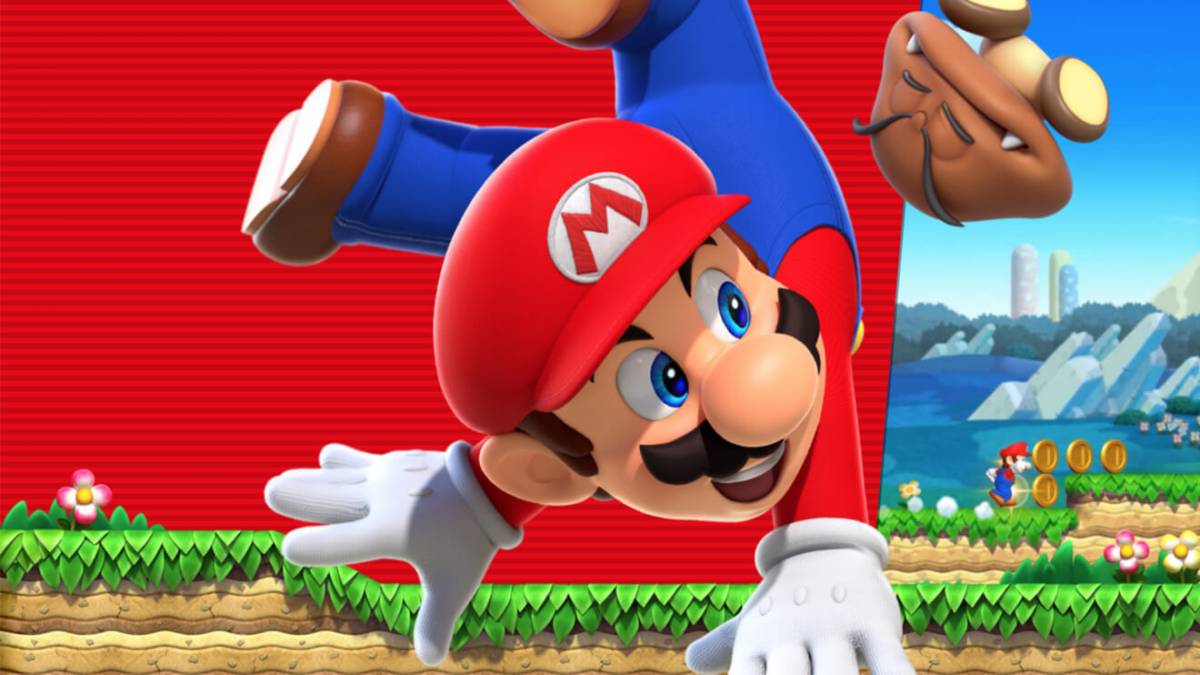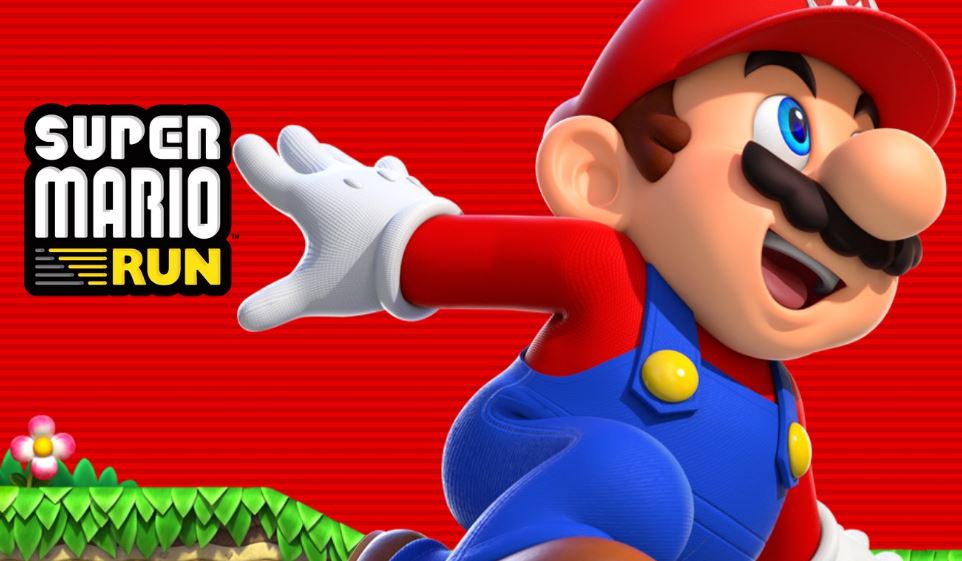So, over the past couple of days whenever anybody has asked me whether I’ve been enjoying Super Mario Run, I haven’t actually heard them, because I’ve been busy playing Super Mario Run.
To say the game is addictive would be a severe understatement. There’s playing a few games while you wait for the kettle to boil and then there’s realising you should have eaten dinner two hours ago. Super Mario Run is Nintendo’s first proper foray into the mobile games market, after the groundbreaking Pokémon GO and whatever the hell that Miitomo thing was supposed to be, and so there’s been a lot riding on this wee game leading up to its release. The fact that this is a Mario title is particularly important, as an official release for their flagship franchise illustrates the extent of Nintendo’s commitment to the mobile sphere. It does, however, increase the amount of scrutiny with which Super Mario Run is viewed.
Things don’t get off to an amazing start when you almost immediately hit the game’s paywall. Nintendo definitely seem to have a slightly misguided view of what constitutes a ‘free version’ – in this case, we’re met with an incredibly meagre offering. A measly three levels await the player upon initial startup, so you don’t even have a boss fight to look forward to before you have to reach for the bank card. Moreover, the game’s additional modes (Toad Rally and Kingdom Builder) rely on the main game mode (World Tour) for content and playability, and so the piddly amount of content on display in the free version means that the experience is even more cut down than expected. Basically, Nintendo meant ‘demo’.
Once you do fork out for the full version, things get going, though. The World Tour format will be very familiar to any seasoned Mario player: six worlds with four levels apiece, with at least one of those levels being a boss-fight in the form of an airship or a castle. Mario runs automatically, and it is the player’s job to tap the screen to hop, skip and jump over enemies and hazards to perform tricks and collect coins on their way to the hallowed flagpole at the end of the stage. The gameplay puts a very welcome spin on the established Mario formula, as a familiar aesthetic reminiscent of New Super Mario Bros. combines with the streamlined controls and reinvented focus to create something which feels both old and new. There is a distinct amount of revisionist history going on as well as you no longer have to jump on enemies to dispatch them. Instead, Mario will either automatically hurdle enemies with a conscious tap from the player required to actually defeat the enemy. If there is an issue with this, it’s that the game is incredibly bad at explaining itself when it comes to exactly which enemies can be dealt with in this manner, and so there will be many an occasion of Mario getting his stubby Italian ass handed to him as he attempts a crazy leapfrog toward a collectible.
Still, these levels are very effective at showing what Super Mario Run is all about. Mario runs, jumps, flips, and tumbles with an almost balletic grace, and the free-flowing nature is extremely satisfying. The level design is refreshingly intuitive, and efficiently implemented to make the most of Mario’s new parkour-like movement system. Acrobatic arrangements of blocks and pipes, long-jumps, wall-jumps and environmental hazards are used to great effect to test the mettle (and patience) of the player on their quest to rescue Princess Peach. That being said, there are a few levels that betray this setup, as the all-important flow comes to a screeching halt. Case in point, the Ghost House ones are a load of piss, as the non-linear arrangement of the levels clashes heavily with Mario’s automatic running. Veteran Mario players will be familiar with the Ghost House, and they’ll know that these levels based on exploration, secrets and traps. The automatic movement system in Super Mario Run simply doesn’t work with non-linearity.

The boss fights with Bowser are another stumbling block. There are three in total, with the first two following the same format as the fights in the original Super Mario Bros. Again, the automatic movement and inability to purposefully move backwards essentially means that the only surefire strategy for winning one of these fights is just to ensure that Mario has a mushroom on hand so he can just tank a hit. The final fight is more reassuring, as it’s actually based around the automatic running mechanic used in the main game and sees Mario chasing a moving Bowser, swatting back the Bob-Ombs dropped by the big spiky bastard. This final level is infinitely better suited to the movement system than the other boss fights, and it’s just a shame that they weren’t able to be more thoroughly integrated into the Super Mario Run flow.
The main problem with Super Mario Run, however, is its requirement for a constant internet connection in order to play. Simply put, there is no need to be always online, especially when playing the World Tour mode. The reason that the internet requirement is such a nagging complaint is that it betrays the portability granted by the game being on a mobile device. Playing over a Wi-Fi connection is all well and good, but when it comes time to get the bus to school or the train to work, the player will most probably have to rely on a mobile data connection, which could result in running up a bill before long. The competitive Toad Rally mode adds a degree of legitimacy to the online requirement, but connection issues can be immensely frustrating at times, albeit not quite as frustrating as being kicked back to the title screen during a single-player World Tour level because the game forgot how to internet.
Gripes aside, the World Tour mode is a welcome splash of Mario-ness. There is a decent amount of variety of level design on display, although one cannot help but view the lack of an ice or water level to be a missed opportunity in terms of movement hazards, and a vast amount of content and replayability due to the different sets of special coins scattered across each level. The coins are particularly important for the overall game experience, as they also serve to add a certain robustness to proceedings, otherwise the game would have been a bit on the stumpy side.
Besides, it’s the Toad Rally mode that’s going to keep you hooked on Super Mario Run. How it works is that you collect special Toad Rally tickets in the World Tour mode, or via the online shop, and you compete against other players online in a race which rewards points based on coins collected and tricks performed. The levels are fast and free-flowing, and it is immensely satisfying to blaze a trail through the level, picking up coins and power-ups and snatching victory from the hands of your opponent. It’s incredibly accessible and relentlessly addictive, and works well in conjunction with the Kingdom Builder mode. Victories scored in Toad Rally mode result in an increase in the number of Toads living in your Kingdom, and as your Kingdom grows in size and levels up you gain access to special items and bonus games. The Kingdom Builder isn’t the most mechanically extensive thing in the world, but it works well alongside Toad Rally and is infinitely more entertaining to look at than a dowdy high score.

That being said, the tickets required to play Toad Rally are less readily available than the game would have the player believe. You can gain tickets through collecting special coins in World Tour mode, of which there are a finite number, and through special game houses in Kingdom Builder mode, which only pay out a depressingly small amount of tickets and which reset very infrequently. Lastly, you can get them using the Mario coins you gain by completing specific challenges within the game, but they are incredibly expensive and very few for the price. Not to mention the Mario coins themselves are hard to get, as the challenges that actually pay generously are completed quickly and never reset, while the ones that are in play continuously are apparently run by Scrooge McDuck judging by the stingy amount they pay. To put it pithily, any addiction to Toad Rally you may develop will be rather short-lived.
There’s no denying that Super Mario Run is a bit of a mixed bag, but whatever you take from this review, please don’t let it be that the game isn’t worth your time, because it most certainly is. The game is dripping with trademark Nintendo magic which this writer finds incredibly reassuring for the future of their mobile market focus. The attention to detail is wonderful, from the way the game gives you a couple of seconds to regain your bearings after you resume from a pause screen, to the way the bottom portion of the screen is devoid of action for the purposes of giving the player somewhere to tap. The music is typically upbeat and catchy, with a few remixes of classic Mario tracks which will make their home in your head, and the visuals are remarkably crisp and vibrant. Some of the levels are complete duds, but there are glimpses of absolute genius in others that balance out the experience.
Finally, the fact that the game can only be played online completely undermines the ‘play it anywhere’ point of a mobile game, and the paywall could understandably turn a lot of people off but come on, it’s a Mario game you can play with one hand.
Some of the coverage you find on Cultured Vultures contains affiliate links, which provide us with small commissions based on purchases made from visiting our site. We cover gaming news, movie reviews, wrestling and much more.



